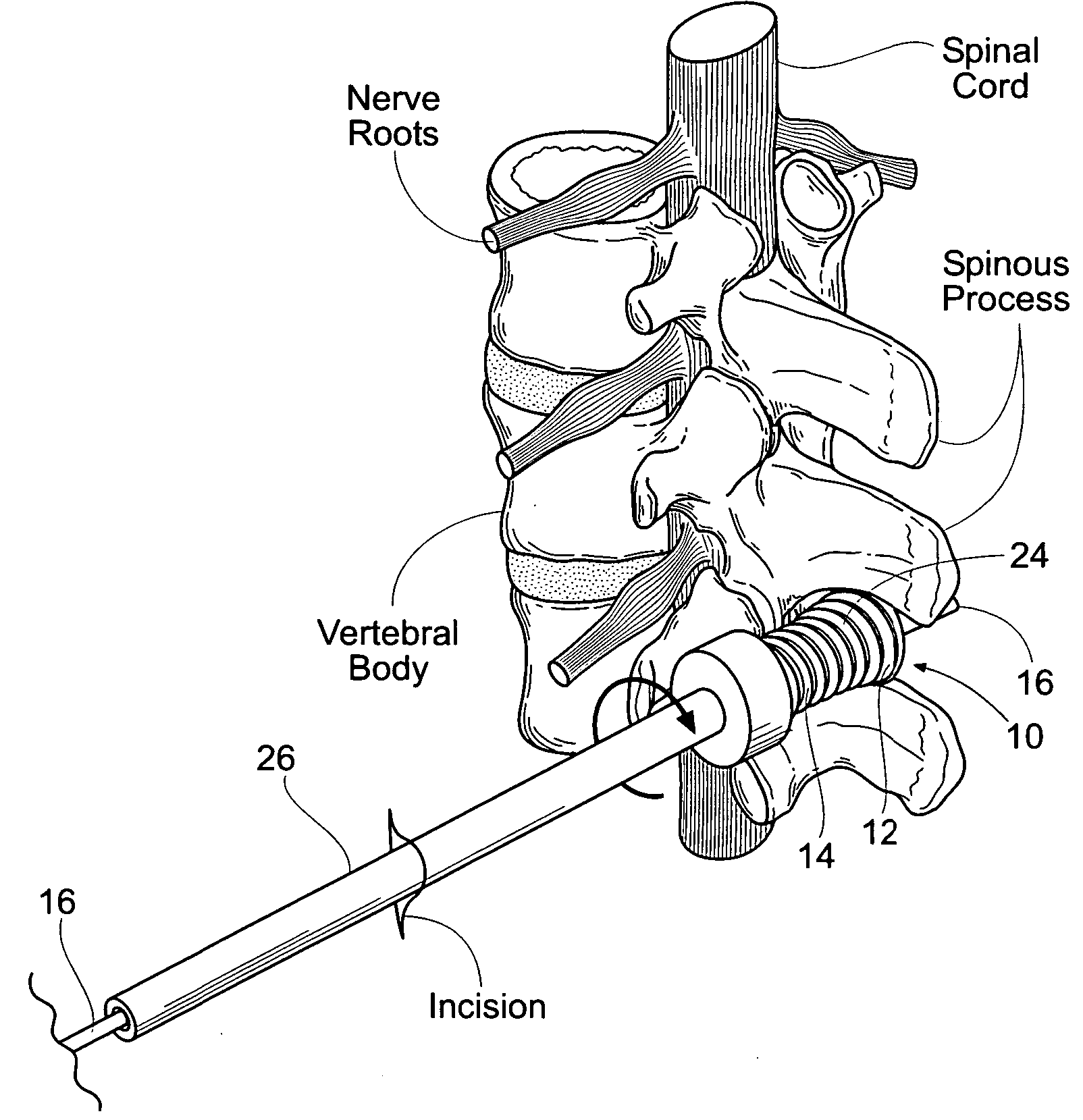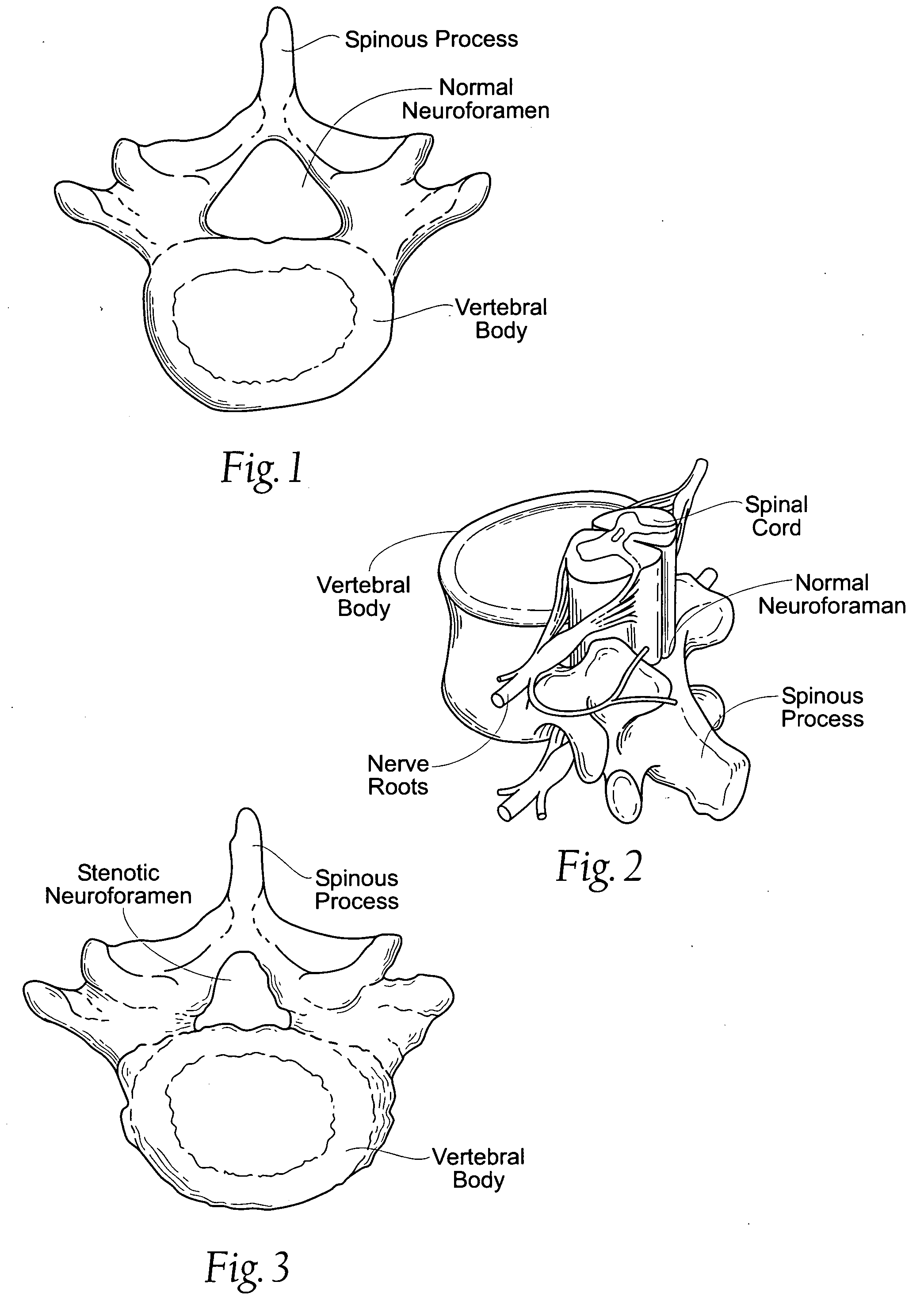Percutaneous spine distraction implant systems and methods
a technology of implant systems and spines, applied in the field of spinal cord and nerve root pressure relief, can solve the problems of inability to fully fully fully discharge, inability to fully discharge, etc., to achieve the effect of relieving the pressure on the spinal cord and/or nerve roots
- Summary
- Abstract
- Description
- Claims
- Application Information
AI Technical Summary
Problems solved by technology
Method used
Image
Examples
Embodiment Construction
[0038]FIG. 1 shows a vertebra with a normal neuroforamen. FIG. 2 shows the passage of the spinal cord and nerve roots in a normal neuroforamen.
[0039]FIG. 3 shows a vertebra with a stenotic neuoforamen, i.e., a neuroforamen that has a reduced sized, compared to the neuroforaman shown in FIG. 1. As FIG. 4 shows, the narrowing of the spaces in the spine that results in pressure on the spinal cord and / or nerve roots. When the neuroforamina are reduced in size, the nerves may swell and become inflamed, causing pain and discomfort.
[0040]FIG. 5 shows a device 10 that has been implanted by percutaneous access between adjacent first and second spinous processes of the stenotic vertebrea shown in FIG. 4. The device 10 relieves the pressure on the spinal cord and / or nerve roots. FIG. 6 shows the device 10 as it exists outside the body, prior to implantation. The device 10 can be made of a durable prosthetic material, such as, e.g., polyethylene, rubber, a sponge material (e.g., polyethylene ...
PUM
 Login to View More
Login to View More Abstract
Description
Claims
Application Information
 Login to View More
Login to View More - R&D
- Intellectual Property
- Life Sciences
- Materials
- Tech Scout
- Unparalleled Data Quality
- Higher Quality Content
- 60% Fewer Hallucinations
Browse by: Latest US Patents, China's latest patents, Technical Efficacy Thesaurus, Application Domain, Technology Topic, Popular Technical Reports.
© 2025 PatSnap. All rights reserved.Legal|Privacy policy|Modern Slavery Act Transparency Statement|Sitemap|About US| Contact US: help@patsnap.com



